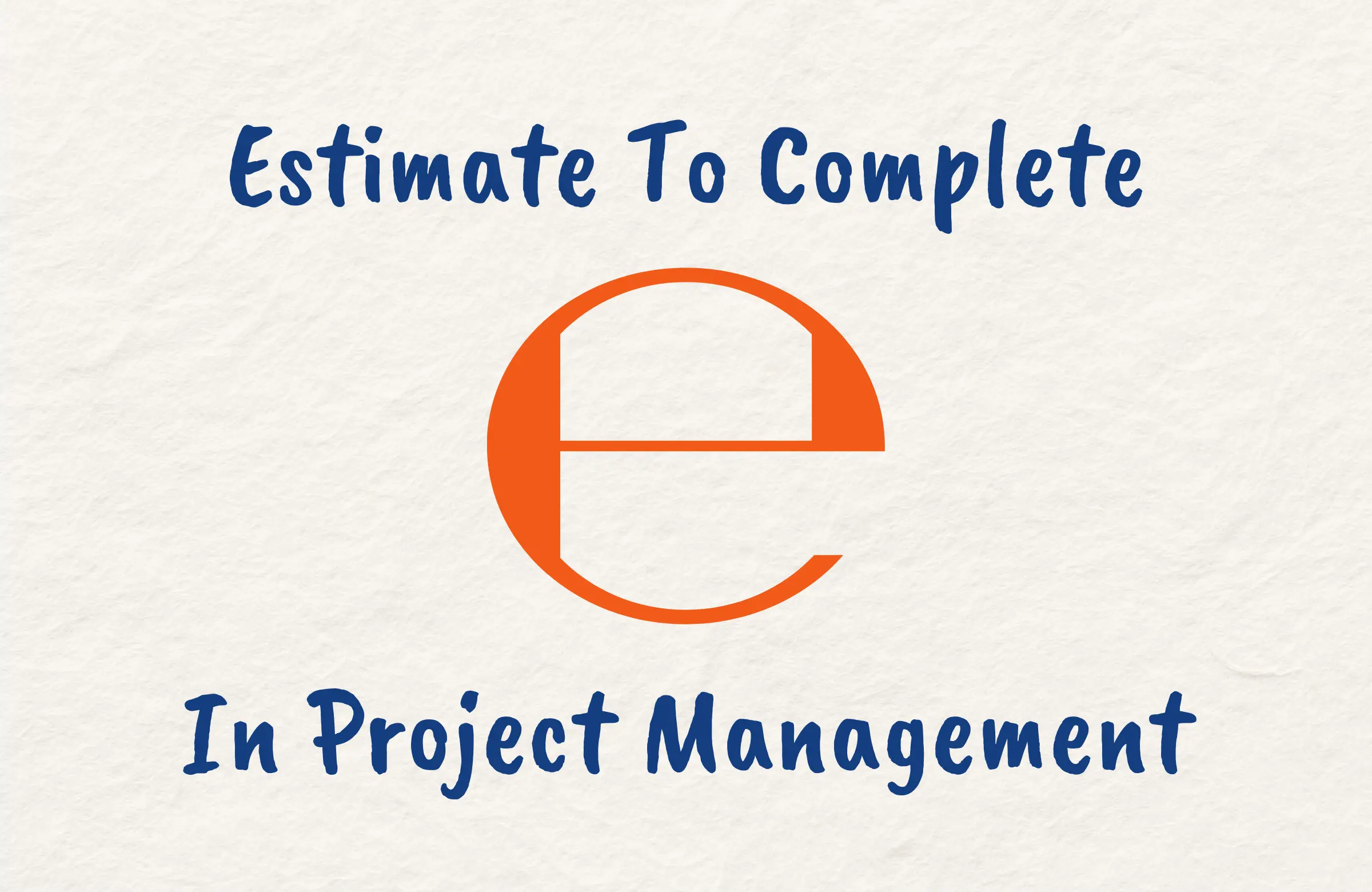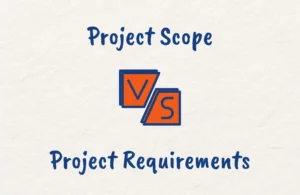As a project manager, you need to keep close tabs on your project’s budget. That’s why tracking the estimate to complete (ETC) is so important.
The ETC is a key component of earned value management that helps you forecast the remaining costs to finish your project.
In this post, we’ll explain what the ETC is, its purpose in project cost management, and how to calculate it. You’ll learn the ETC formula and see an example calculation. We’ll also share some tips for tackling ETC questions on the PMP exam.
Learning how to determine a project’s ETC will bolster your project cost management skills.
What is Estimate to Complete (ETC) in Project Management
The estimate to complete (ETC) is a vital forecasting tool used in project cost management to help you predict how much money you’ll need to finish your project based on its current performance.
Specifically, the ETC provides the estimated cost required to complete all the remaining work in your project.
As a project progresses, you monitor how it’s tracking against the original cost baseline. When significant deviations occur, you need to re-forecast the budget. That’s where ETC comes in – it gives you that new forecast.
ETC only includes future costs from the status date to the project end and doesn’t factor in previously incurred costs.
Knowing your project’s ETC is extremely useful as it enables you as the project manager to communicate updated cost projections to your sponsors and get approval for any additional funding needed.
Purpose of Estimate to Complete Formula in Project Management
The main purpose of the estimate to complete (ETC) formula is to forecast the expected remaining costs to finish your project.
As the project progresses, you compare the actual costs incurred so far against the originally approved budget – the budget at completion (BAC).
When significant cost variances arise, you need to recalculate the total budget required to complete the project. This is where ETC comes in. The ETC formula allows you to estimate future expenditures based on the current project performance.
It provides a mathematically derived cost projection for the outstanding work. You can use this vital data to request additional funds from your project sponsor if needed.
The ETC also feeds into the estimate at completion (EAC), which is the forecasted final cost of the project.
Estimate To Complete Formulas
The estimate to complete (ETC) formula is very simple in its basic form:
ETC = EAC – AC
Where:
- EAC = Estimate at Completion
- AC = Actual Costs incurred to date
To calculate ETC, first determine the EAC. This is your forecasted total budget required to complete the project.
Then, subtract the AC spent so far. The remainder is your ETC – the estimated cost to finish the outstanding work.
This straightforward formula allows you to forecast future expenditures needed to complete your project.
However, there are other formulas for ETC based on different scenarios:
1. Bottom-Up Estimation
With this approach, you calculate ETC by adding up detailed estimates for all the remaining work packages or activities in the project.
- Gather the latest project schedule and work breakdown structure (WBS)
- Estimate the costs for each unfinished work package
- Add all the work package cost estimates to determine the total ETC
This provides a very accurate ETC forecast since it is based on the actual scope of the remaining work.
Use bottom-up ETC when:
- The detailed project WBS is available
- The project team members who will perform the work are known
- Accurate task level estimates can be determined
2. EAC Based on CPI
For this EAC is calculated as:
EAC = BAC / CPI
Then ETC is determined as:
ETC = (BAC – EV) / CPI
Where:
- BAC = Budget at completion
- EV = Earned value
- CPI = Cost performance index
This formula assumes the future cost performance will align with the past performance.
Use when:
- BAC and EV are known
- The CPI is calculated based on actual project performance to date
- Future project performance is expected to follow trends from the past
3. EAC Based on TCPI
EAC is calculated as:
EAC = BAC / TCPI
Then ETC is determined as:
ETC = (BAC – EV) / TCPI
Where:
- BAC = Budget at completion
- EV = Earned value
- TCPI = To-complete performance index
Use when:
- The project needs to be completed within the original BAC
- The TCPI is calculated based on the amount of performance improvement needed to meet the BAC
- Future performance must improve compared to past trends
As you can see, there are various ETC formulas to cover different project situations and performance factors.
The key is to choose the right formula for your specific scenario to forecast the remaining costs to complete the outstanding work accurately.
How to Calculate Estimate to Complete (ETC)
Calculating the estimate to complete (ETC) is a key project management skill. Here are the steps to determine ETC:
1. Identify ETC Formula
First, determine which ETC formula fits your project situation. The main options are:
- ETC = EAC – AC (basic formula)
- Bottom-up estimation
- EAC based on CPI
- EAC based on TCPI
Choose the formula that aligns with the available data and required assumptions.
2. Gather Inputs
Next, gather the formula inputs. These may include:
- Budget at completion (BAC)
- Earned value (EV)
- Actual costs (AC)
- Detailed work package estimates
- Cost performance index (CPI)
- To-complete performance index (TCPI)
3. Perform Calculation
Plug the formula inputs into your chosen ETC equation. Calculate the result to determine the forecasted remaining cost to finish the project.
4. Document Assumptions
Document any assumptions made in selecting the ETC formula and inputs. This helps justify your forecast.
5. Analyze ETC
Analyze how the ETC compares to the original cost baseline and look for significant variances. Use this data to project project performance going forward.
6. Manage Budget
If the ETC is higher than planned, use it to request an additional budget. The ETC helps you manage costs and maintain budget control.
Following this process enables accurate ETC forecasts, giving you the data to keep your project financially on track.
Estimate To Complete Example
Let’s look at an estimate to complete (ETC) example to make this calculation more tangible.
You’re managing a construction project with a budget at completion (BAC) of $100,000. The project is 4 months into the planned 1-year schedule.
The total actual costs (AC) spent so far are $40,000. An earned value management (EVM) analysis shows the project has completed 30% of the total planned work.
However, the cost performance index (CPI) is currently 0.80, indicating the project is over budget.
You need to calculate the ETC to forecast the remaining costs. Since the project is already underway, you can use ETC = (BAC – EV) / CPI.
The earned value (EV) is 30% of the BAC, which equals 0.3 * $100,000 = $30,000.
Plugging this into the formula:
ETC = (BAC – EV) / CPI
= ($100,000 – $30,000) / 0.80
= $70,000 / 0.80
= $87,500
The ETC is $87,500. This exceeds the original estimate, so you’ll need to request additional funds to complete the project.
This example demonstrates how the ETC formula helps you forecast future costs so you can proactively manage the budget.
Estimate to Complete PMP Exam Tips
The estimate to complete (ETC) is an important concept for the PMP exam. Per the PMBOK guide, ETC is a key output of the Control Costs process.
ETC is used to forecast remaining project costs during project monitoring and control. The ETC calculation methods are tools and techniques of the Control Costs process.
For the exam, focus on the various ETC formulas like ETC = EAC – AC, ETC = (BAC – EV)/CPI. Understand when each formula applies. Know the inputs required such as actual costs (AC), budget at completion (BAC), and earned value (EV).
Also, be familiar with concepts like bottom-up estimation for ETC. Review the differences between ETC and estimate at completion (EAC). Know that ETC feeds into EAC.
You may see exam questions on interpreting an ETC forecast, like whether the project needs more funds based on ETC versus the cost baseline. Review ETC calculation examples so you can solve PMP exam questions.
Getting comfortable with ETC will demonstrate your competency in project cost management for the exam as this is a must-know topic.
Conclusion
Accurately forecasting the remaining costs to complete a project is critical for project budget control. The estimate to complete (ETC) provides this vital data, enabling you to proactively manage your project’s finances.
By mastering ETC concepts like the key formulas and calculations, you can produce reliable ETC projections. This helps you validate and adjust the estimated cost as needed throughout your project’s lifecycle.
With a solid handle on determining the ETC, you can expertly manage project budgets and maintain strong cost performance. The ETC gives you immense insight into your project’s future expenditures.





